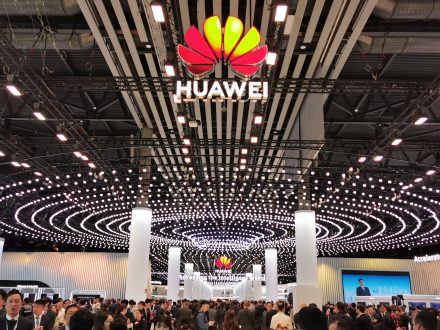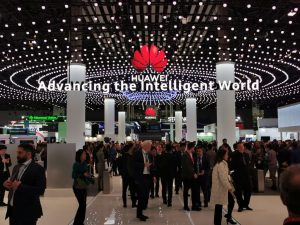The 5.5G Commercial Roadmap Begins

After four years of development, the new standard for mobile communications prior to 6G is already a reality and will begin commercial use this year.
The telecommunications industry does not rest and continues to advance at a frenetic pace. It is probably the sector that is evolving the fastest thanks to the adoption of mobile devices, but also to other segments such as the Internet of Things, where everything is full of sensors collecting information that must be sent and processed.
In today’s era of data, efficiently moving all that information from one place to another so that it can be processed has become the real driver of the global economy.
At this edition of the Mobile World Congress being held in Barcelona, we have witnessed the maturity of 5G and the peak of its deployment: “The 5G road is well on its way to commercial success,” said Li Peng, Corporate Senior Vice President and President of ICT Sales and Services at Huawei during the congress.
Since its commercial launch in 2019, 5G has rapidly gained ground, reaching 1.5 billion users worldwide in the first five years. To put it in perspective, its predecessor, 4G, took nine years to reach the same user base. Today, 20% of mobile users globally are using 5G, generating 30% of all mobile traffic and contributing 40% of total mobile service revenues.
Meanwhile, the Telco sector is also awaiting the deployment of 5G in the previously mentioned industrial sectors through the Internet of Things. Many projects have already been launched worldwide, but there is still a long way to go and room for operators to get a return on the millions of dollars in investments they have been making in recent years, and also for organizations to get the most out of their facilities by making them more efficient thanks to its connectivity.
5.5G is now ready for commercial deployment
A year after the commercial launch of 5G, companies such as Huawei began working on the next standard and a preliminary step to 6G. Indeed, in 2020, there was already talk of 5.5G (also called 5G Advanced), a name that was approved by 3GPP in 2021.
In 2022, more than 10 telecom operators agreed on this standard, capable of achieving download speeds of 10 Gbps, something unthinkable years ago. This is 10 times the download speed that can be achieved with the current 5G, so we can get an idea of the magnitude of this advance. Similarly, 5.5G will enable upload speeds of 1 Gbps (again, 10 times the upload speed achievable with 5G) and a greater number of connections per node.

Throughout 2023 we could begin to see the first field demonstrations of this standard and the launch of 5.5G chipsets for telecommunications infrastructure, although the truth is that these SoCs will still take time to reach smartphones. Had it not been for the unfair US trade veto against Huawei, the manufacturer would already have them ready.
The Chinese multinational also offered details of the various capabilities that will be available with 5.5G, such as passive IoT (chips that do not require an external power supply but acquire it through electromagnetic waves), native artificial intelligence, and much more efficient geographic distribution of telecommunications cells.
Li Peng explained: “5.5G will enter commercial use in 2024, and as the convergence between 5.5G, AI, and the cloud takes place, operators will be able to unlock the potential of new applications and capabilities. In his words, operators around the world should focus on high-quality networks, multidimensional monetization, emerging services, and generative AI to take advantage of these opportunities.
GigaGreen: Huawei’s new 5.5G native solutions
The manufacturer took advantage of MWC to announce new solutions to facilitate the Telecom industry’s adoption and deployment of 5.5G multi-path based services.
Cao Ming, director of Huawei Wireless Solution, was in charge of explaining these capabilities along with several commercial deployments already made, all encompassed in the GigaGreen strategy that we summarize below:
![]()
MetaAAU 64T for Multiband Coverage:
* Extremely large antennas (ELAA) on MetaAAU 64T.
* Support for multiple bands, including 3.5 GHz, 2.6 GHz, and 4.9 GHz.
* Simplifies site construction and provides 5 Gbps continuous.
Hepta-band RRU for FDD Ultra-wideband:
* FDD ultra-wideband upgrade to support 7 bands.
* Allows 100 MHz of existing bandwidth to be reused.
* 8T8R and Massive MIMO solutions for maximum spectral efficiency.
mmWave for 10 Gbps:
* mmWave AAU with more than 2,000 antenna elements, the largest in the market.
* Four times higher beam density, breaking the mmWave coverage bottleneck.
* Effective in delivering a 10 Gbps experience in mobility scenarios.
LampSite X Indoor:
* Operates in sub-6 GHz and mmWave bands, supporting up to 1.6 GHz bandwidth.
* Enables 10 Gbps in indoor environments.
* Examples of deployment in Hong Kong with increased traffic and additional revenue.
“0 Bit 0 Watt” for Energy Efficiency:
* Incorporates “Native Green” architecture, hardware and software.
* Up to 10 times more energy efficient, consuming less than 10 W in idle mode.
* Verified in active networks in Zhejiang, China, with energy savings of over 40%.
MAGICSwave for 2T Microwave:
* Supports 2T microwave in all scenarios, maximum capacity of 50 Gbps.
* Rapid deployment in Zhejiang, China, for 5G backhaul in two days.
* In Nigeria, long distance microwave solution with less hardware and 30% savings.
Echo and Marconi Antenna Technologies:
* Direct signal injection feeding (SDIF) function in all antennas.
* Antenna Eco improves energy efficiency by up to 20%.
* Marconi antenna, the first digital antenna with low aerodynamic impact and 2D beam adjustment without site visits.
IntelligentRAN for Intelligent Networks:
* Incorporates large communication models and digital twin RAN systems.
* Supports L4 network intelligence to reduce costs and increase efficiency.
* Examples of proactive O&M in Hangzhou and increased traffic with lower consumption in Hubei, China.
6G is already on the horizon
We began this article by describing the frenetic advance of the telecommunications industry, and 6G is no exception.
The sixth generation of mobile communications has been on the table for some time through the main industry players, who are already working on this new specification and the standard that will enable commercial deployment to begin around 2030.
However, from 2026 onwards we will start to see the first real use cases while a generation that will once again break speed records, surpassing the Tbps barrier (1,000 Gbps) and latency (reduced to 0.1 milliseconds), but will mainly offer significant improvements in terms of energy efficiency and environmental sustainability, is being finalized.
Among the main applications that will be unlocked with the advent of 6G are extended reality or holographic communications, as well as greater use of artificial intelligence in virtually every area of telecommunications.
But this is just the beginning of another journey that promises to be, once again, disruptive and exciting. A journey that has already begun and that we will be chronicling in Silicon.